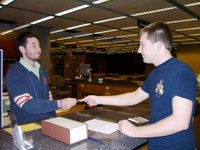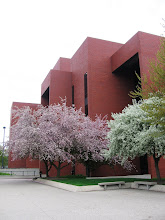
The popular meeting room on Bracken Library’s second floor now has a name. Formerly called “Bracken 225,” the room is now called the Bracken Library Forum Room.
The Forum Room is ideal for larger group meetings because it offers a comfortable meeting space for up to 100 people. It is popularly reserved by Ball State administrators for candidate presentations, such as those hosted recently for Provost candidates. Often, these types of events are streamed for remote viewing.
The faculty reserves the room for lectures, conferences, and public presentations; staff reserve it for assembly meetings, workshops, and similar activities.
The Forum Room offers amenities such as
• An overhead Epson projector for digital video and PowerPoint or other presentations
• A large pull-down screen
• Internet access in Bracken Library’s 100% wireless environment
• Worldwide videoconferencing capability
• A podium, microphone and sound system
• Two large monitors for participants to easily view video or television programming provided through the University’s video information system
• Chairs for seating 100 persons, or computer tables and chairs for 24 persons
• Refreshments are permitted in the room if arranged through Banquet and Catering Services.
For information on reserving the room or equipment options, contact Denise Kinney at DKinney@bsu.edu or call (765) 285-1307.
This article was published in The Library Insider May 2006, pg. 7.




